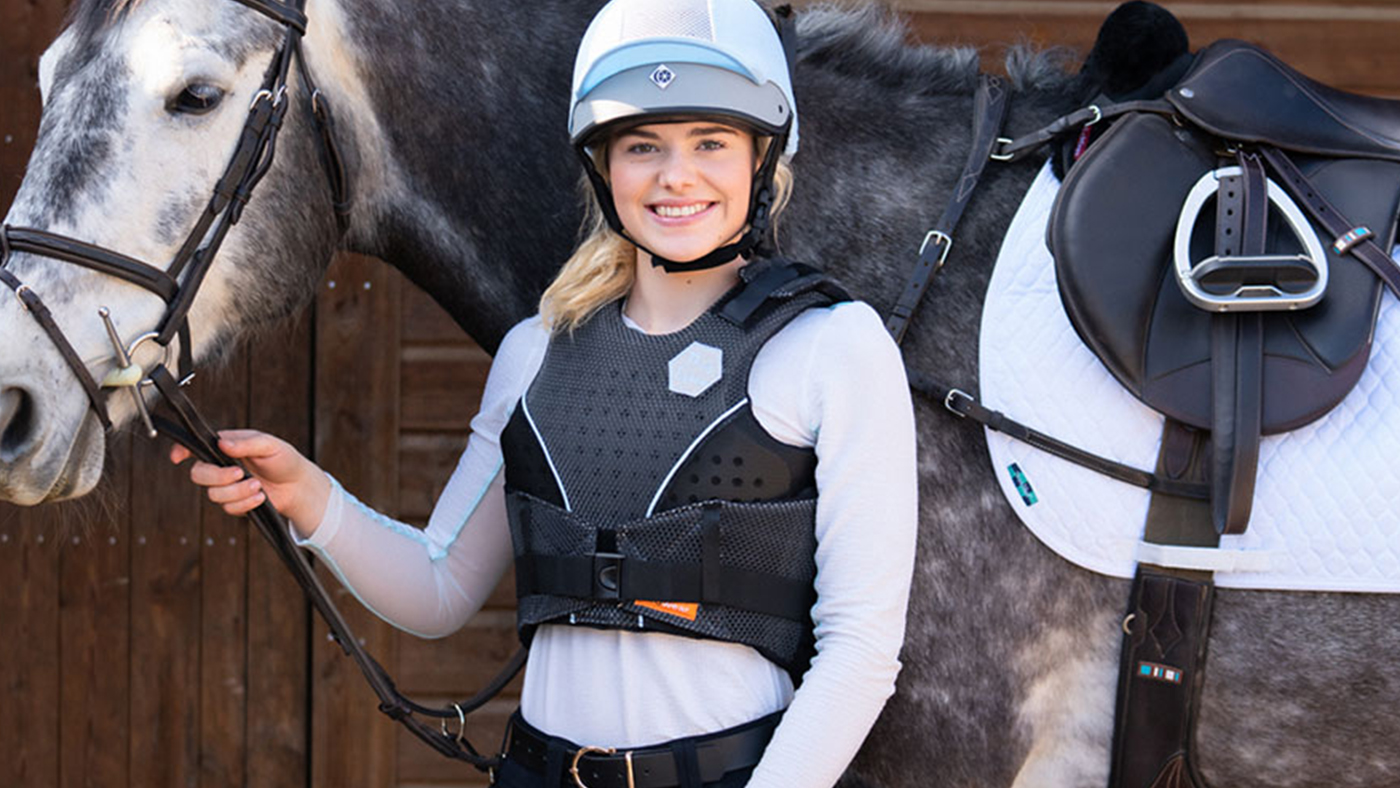Do you love horseback riding? Whether you’re a seasoned rider or just starting out, having the right gear is essential for a safe and enjoyable experience. In this article, we’ll explore the topic of essential horseback riding gear and discuss why it’s important to invest in the proper equipment. So saddle up and get ready to learn more about the gear that will enhance your horseback riding adventures!
When it comes to horseback riding, having the right gear is crucial. The first and most important item on your list should be a well-fitting helmet. Riding can be unpredictable, and a helmet will protect your head in case of a fall or accident. Next, you’ll want a comfortable pair of riding boots with a slight heel. Not only will this keep your feet secure in the stirrups, but it will also provide stability and support while riding. Additionally, riding pants or breeches are recommended for a more comfortable and ergonomic riding experience. These specialized pants provide grip and reduced friction, making it easier to communicate with your horse through your legs.
This is just a sneak peek into the world of essential horseback riding gear! In our upcoming blog posts on “http://horsebackridingdude.com”, we’ll dive deeper into the details of each item and explore other gear that can enhance your riding experience. So stay tuned for more tips and tricks to become a well-equipped rider!
Essential Horseback Riding Gear
When it comes to horseback riding, having the right gear is essential for both your safety and comfort. Whether you’re a beginner or an experienced rider, investing in the proper equipment can make all the difference in your riding experience. In this article, we will explore the essential horseback riding gear that every rider should have in their arsenal.
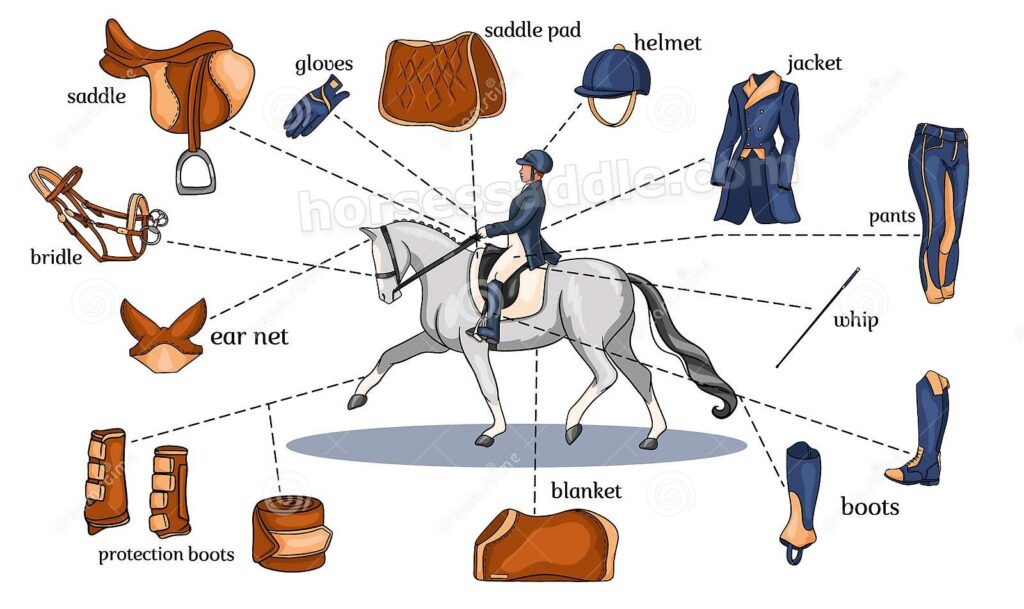
Riding Helmet
A riding helmet is perhaps the most important piece of gear for horseback riding. It protects your head in case of a fall or other accidents. When choosing a helmet, make sure it fits properly and meets safety standards. Look for helmets that are certified by organizations such as ASTM or SEI.
Riding Boots
A good pair of riding boots is crucial for a secure and comfortable ride. Riding boots have a specific design that provides ankle support and prevents the foot from slipping through the stirrup. Look for boots with a low heel and a non-slip sole to ensure better grip and control.
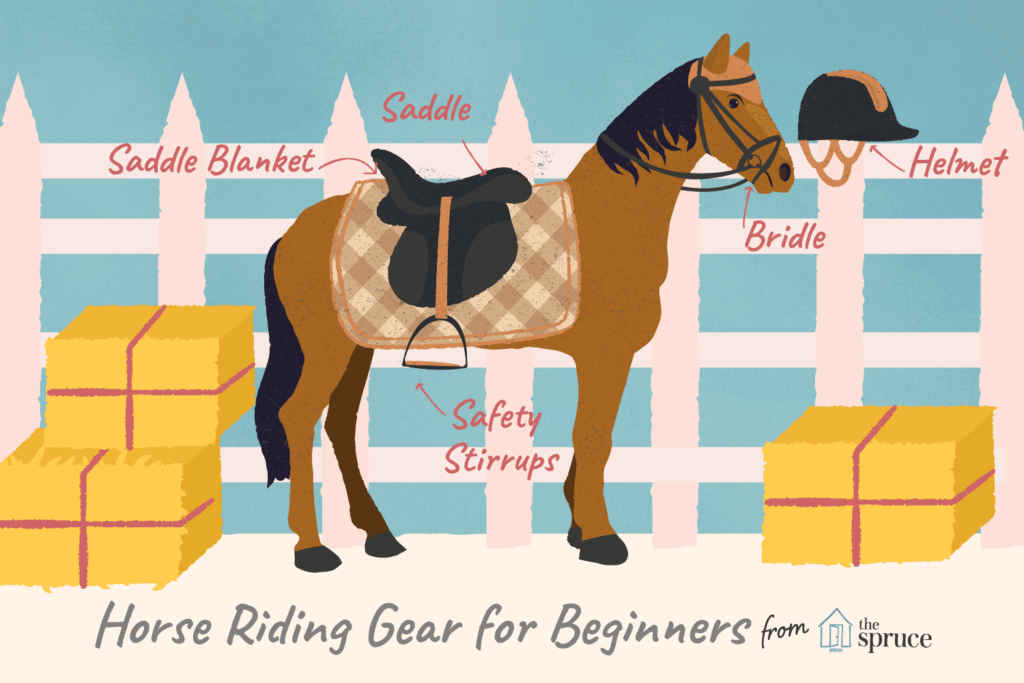
Riding Breeches
Riding breeches are specially designed pants for horseback riding. They provide comfort, flexibility, and protection against saddle sores. Breeches are usually made of stretchable and breathable fabrics, such as cotton or synthetic blends. They also have reinforced knee patches or full-seat patches for added grip and durability.
Riding Gloves
Riding gloves protect your hands from blisters, calluses, and reins’ friction. They also provide better grip and control of the reins. Look for gloves made of durable materials, such as leather or synthetic materials with a good grip. Ensure that the gloves fit snugly, allowing flexibility and freedom of movement.
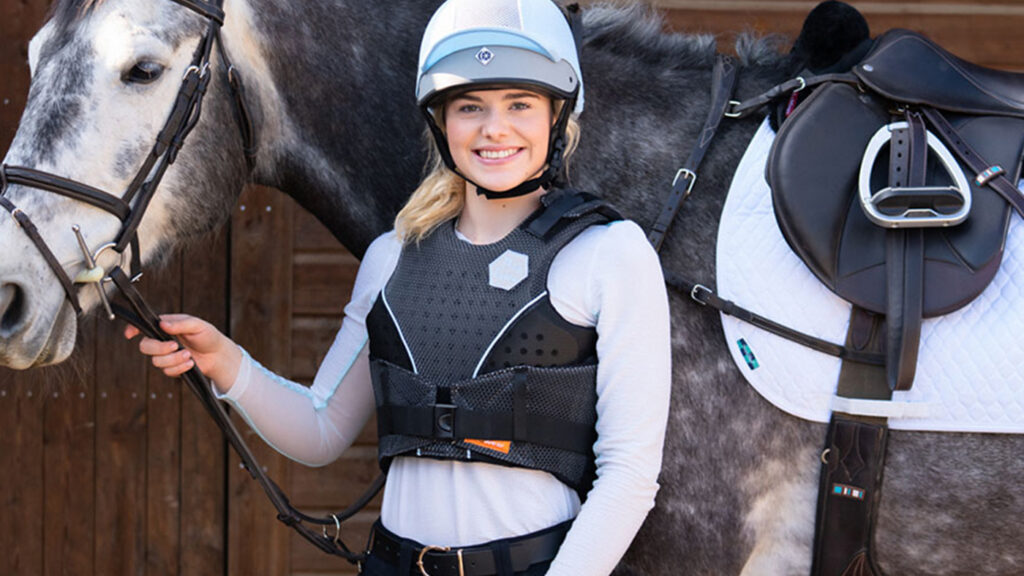
Safety Vest
For riders engaging in jumping or cross-country activities, a safety vest is a must-have. This piece of gear offers added protection to the rider’s chest, back, and vital organs in case of a fall or collision with obstacles. Safety vests should fit properly and be certified by safety organizations.
Whips and Crops
Whips and crops are aids used to communicate with the horse and reinforce the leg aids. Whips are longer and are used for dressage or general riding, while crops are shorter and commonly used for jumping or racing. When choosing a whip or crop, make sure it is appropriate for your riding discipline and allows proper communication with your horse.
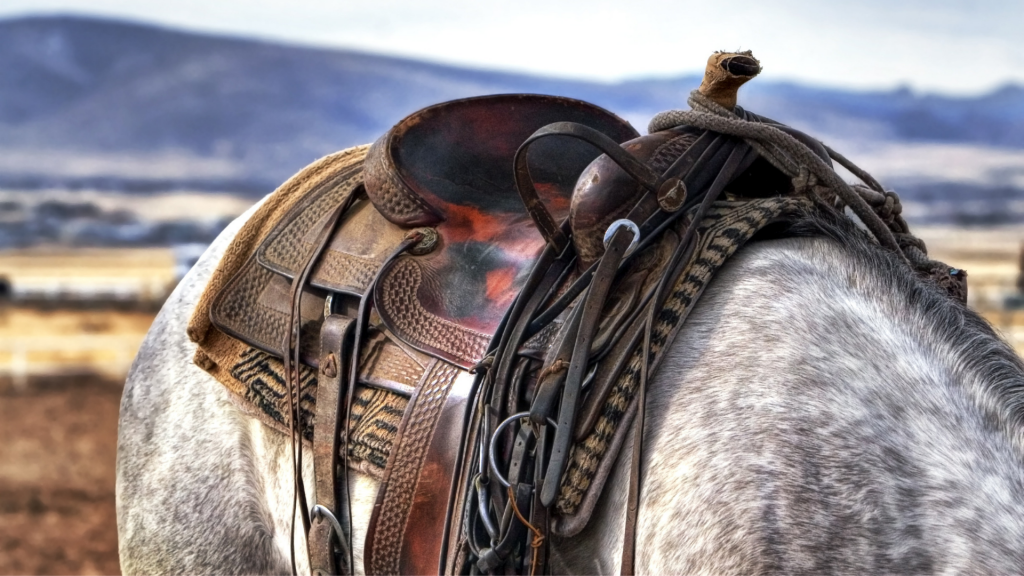
Tack and Equipment
Tack refers to the equipment used for riding and controlling the horse. Here are some essential tack items every rider should know about:
Saddle and Girth
The saddle is the main item of tack for the rider. It provides comfort and support while distributing the rider’s weight evenly. Choose a saddle that fits both you and your horse properly and suits your riding style. The girth is the strap that keeps the saddle in place and provides stability. Each horse requires a specific size and type of girth to ensure a secure fit.
Bridle and Bit
The bridle is the headgear used to control the horse. It includes the headstall, bit, and reins. The bit goes into the horse’s mouth and is a critical part of communication. There are various types of bits available, so it’s essential to choose one that suits your horse’s needs and your riding goals.
Reins
Reins are used to control and guide the horse. They attach to the bit and go through the rider’s hands. There are different types of reins, such as leather, rubber, or synthetic materials. Choose reins that provide a good grip and are comfortable for you to hold.
Stirrups
Stirrups are the platforms where the rider’s feet rest. They provide balance, support, and stability while riding. Look for stirrups with proper foot placement and grip to prevent your feet from slipping through.
Breastplate
A breastplate is a piece of tack that goes across the horse’s chest and helps keep the saddle in place. It provides extra security, especially when jumping or riding in hilly terrain. Choose a breastplate that is adjustable and fits your horse properly.
Martingale
A martingale is a piece of tack used to control the horse’s head carriage and prevent head tossing or excessive upward movement. There are different types of martingales, such as standing and running martingales. Consult an experienced trainer or instructor to determine if a martingale is necessary for your horse and riding style.
Basic Riding Techniques
Before hitting the trails, it’s important to learn and practice basic riding techniques. Here are a few fundamental riding skills you should master:
Mounting and Dismounting
Proper mounting and dismounting techniques are essential for the rider’s safety and the horse’s comfort. Practice mounting and dismounting from both sides of the horse to develop symmetry and balance.
Proper Balance and Posture
Maintaining a correct balance and posture ensures stability and control while riding. Keep your heels down, shoulders back, and maintain a straight line from your ear, shoulder, hip, and heel. Engage your core muscles to maintain balance and stability.
Use of Aids: Legs, Hands, and Voice
Riders communicate with the horse through aids, such as leg pressure, rein contact, and vocal cues. Learn how to apply and release these aids effectively to communicate your intentions to the horse. Practice using aids independently and in coordination to achieve desired responses from your horse.
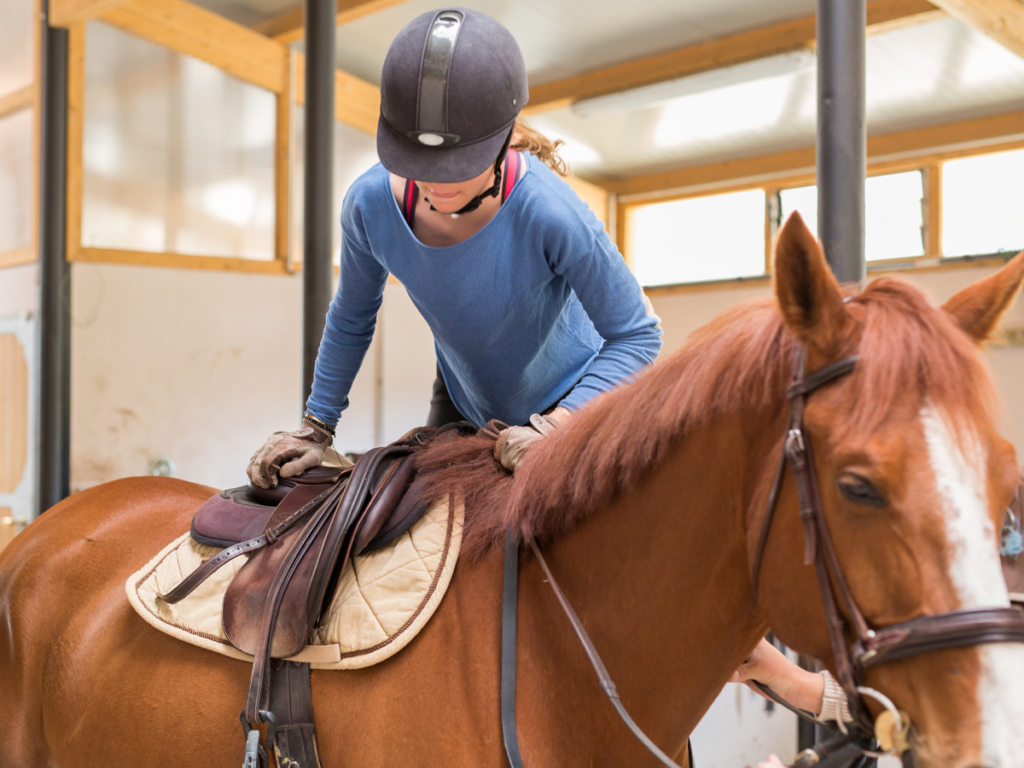
Different Riding Styles
Horseback riding offers a variety of disciplines and riding styles. Here are some popular riding styles you can explore:
English Riding
English riding includes disciplines such as dressage, show jumping, and eventing. It emphasizes proper form, balance, and precision. Riders use English saddles, which are smaller and lighter than Western saddles.
Western Riding
Western riding is commonly associated with cowboys and ranch work. It focuses on horsemanship, versatility, and comfort. Western saddles are larger and provide more stability for activities like trail riding, roping, or barrel racing.
Dressage
Dressage is an equestrian sport that showcases the horse’s athleticism and obedience. It involves precise and intricate movements performed with subtle aids and cues from the rider. Dressage riders strive for harmony, balance, and finesse.
Jumping
Jumping involves riding horses over a series of obstacles, such as fences or poles. Show jumping, eventing, and hunter/jumper are some of the popular jumping disciplines. Riders must have good control, confidence, and accurate timing.
Trail Riding
Trail riding is a recreational activity that takes riders through scenic natural landscapes. It offers relaxation, adventure, and a chance to explore nature on horseback. Trail riders should have good control over their horse and be prepared for any terrain challenges.
Understanding Horse Behavior
To become a successful rider, it’s crucial to understand horse behavior and communication. Here are some key aspects to consider:
Horse Body Language
Horses communicate through various body language signals, such as ear position, tail movement, and facial expressions. Learning to interpret these signals can help you understand your horse’s mood, comfort level, and potential reactions.
Horse Communication
Horses communicate with each other through vocalizations, body language, and herd dynamics. Developing a bond and understanding with your horse requires effective communication using aids, body positioning, and voice cues.
Horse Herd Dynamics
Horses are herd animals, and understanding their natural instincts and herd dynamics can enhance your horsemanship skills. Knowing how horses interact, establish pecking orders, and form social bonds can help you establish trust and leadership with your horse.
Rider Safety and Emergency Preparedness
Safety should always be a top priority when horseback riding. Here are some tips to ensure your safety and be prepared for emergencies:
Safe Riding Practices
Follow safe riding practices, such as wearing appropriate gear, using proper mounting and dismounting techniques, and avoiding risky or dangerous behaviors. Always ride within your skill level and be aware of your surroundings.
Emergency First Aid
Learn basic first aid techniques, such as how to treat minor wounds, apply bandages, and manage injuries. Carry a first aid kit with essential items, such as wound dressings, antiseptics, and bandages, when going on trail rides or participating in competitions.
Trail Safety
If you enjoy trail riding, it’s important to be aware of potential hazards and risks. Ride on designated trails, be cautious of uneven terrain, and be prepared for any unexpected situations, such as encounters with wildlife or adverse weather conditions.
Horse Care and Maintenance
Caring for your horse’s well-being is essential for their health and performance. Here are some key aspects of horse care:
Grooming
Regular grooming sessions help maintain your horse’s coat, skin, and overall hygiene. Grooming involves brushing, cleaning hooves, and removing mud, debris, or sweat. It also offers an opportunity to bond with your horse and identify any potential health issues.
Feeding and Nutrition
Providing a balanced diet is crucial for your horse’s health and energy levels. Consult with an equine nutritionist or veterinarian to determine the appropriate feed, forage, and supplements for your horse’s age, activity level, and health condition.
Mucking Stalls
Cleaning and maintaining a clean stall is important for your horse’s health and hygiene. Regularly remove manure, soiled bedding, and ensure a well-ventilated environment to prevent respiratory issues and the spread of diseases.
Hoof Care
Proper hoof care is essential for your horse’s soundness and mobility. Regularly clean and pick out your horse’s hooves, and schedule routine visits from a farrier to trim or shoe if necessary. Regular hoof care prevents foot-related issues and promotes overall hoof health.
Training and Development
Consistent training and development are necessary for both the rider and the horse to improve their skills. Here are some aspects to focus on:
Groundwork
Groundwork exercises help build trust, respect, and communication between you and your horse from the ground. Exercises such as lunging, leading, and desensitization prepare the horse for riding and develop your leadership skills.
Building Trust and Confidence
Trust and confidence are crucial for a successful partnership between rider and horse. Develop a consistent training routine, build positive reinforcement, and expose your horse to various environments to enhance trust and confidence in each other.
Progressive Skill Development
Set goals and work on progressively developing your riding skills and your horse’s abilities. Consistency, patience, and seeking guidance from experienced trainers or instructors can help you and your horse reach your full potential.
Competitive Riding
For riders seeking a competitive edge, horseback riding offers various competitive disciplines. Here are a few popular ones to explore:
Show Jumping Competitions
Show jumping competitions involve riding horses over a series of fences and obstacles in an arena. Riders are judged on their accuracy, speed, and technique. Show jumping tests a horse’s athleticism and a rider’s ability to guide the horse successfully over the jumps.
Dressage Competitions
Dressage competitions showcase the horse’s obedience, balance, and suppleness. Riders perform a series of predetermined movements and tests at different levels. Dressage aims to demonstrate the horse’s willingness and ability to respond to subtle aids and cues.
Rodeo Events
Rodeo events, such as barrel racing, roping, and bull riding, are popular in Western riding disciplines. These events require speed, skill, and precision. Participating in rodeo competitions allows riders to showcase their horsemanship and compete against other skilled riders.
Recreational Riding Destinations
If you’re looking for the perfect horseback riding vacation or a memorable trail ride, here are some scenic destinations to consider:
Scenic Trail Riding Locations
Explore beautiful trails and breathtaking landscapes in destinations such as the Rocky Mountains, the beaches of Hawaii, or the countryside of Ireland. Research trail riding locations that offer guided tours or rent horses for a memorable riding experience.
Horseback Riding Vacations
Plan a horseback riding vacation that combines adventure and relaxation. Consider destinations such as guest ranches in Montana, horse riding safaris in Africa, or exploring national parks on horseback. These vacations offer unique opportunities to immerse yourself in nature while enjoying the thrill of horseback riding.
Popular Horse Breeds for Riding
Different horse breeds excel in various riding disciplines. Here are some popular breeds known for their suitability for riding:
Thoroughbred
Thoroughbreds are well-known for their speed, agility, and endurance. They often dominate in horse racing and excel in jumping and eventing disciplines. Thoroughbreds are highly versatile and trainable, making them a popular choice for many riders.
Quarter Horse
Quarter Horses are known for their versatility and calm temperament. They excel in Western riding disciplines, such as roping, barrel racing, and reining. Their athletic build and willing nature make them suitable for various riding styles and activities.
Arabian Horse
Arabian horses are known for their elegance, endurance, and intelligence. They excel in long-distance riding, dressage, and show jumping. Arabian horses have a distinctive appearance and a spirited demeanor, making them a favorite amongst many riders.
Warmblood
Warmbloods are a group of horse breeds known for their versatility, athletic ability, and trainable nature. They are often used in dressage, show jumping, and eventing. Warmbloods come in various breeds and offer a wide range of riding abilities and temperaments.
Appaloosa
Appaloosas are known for their unique coat patterns and versatile nature. They excel in Western riding disciplines, trail riding, and pleasure riding. Appaloosas are often admired for their friendly and calm temperament.
Conclusion
Having the essential horseback riding gear is crucial for your safety, comfort, and overall enjoyment of the sport. From riding helmets to bridles and bits, each piece of equipment plays a crucial role in creating a harmonious connection between rider and horse. By investing in the right gear, understanding horse behavior, and practicing proper riding techniques, you can enhance your riding experience and build a strong partnership with your equine companion. So, gear up, saddle up, and embark on an unforgettable adventure on horseback!
Remember, horseback riding is an ongoing learning journey, and it’s important to seek guidance from experienced trainers and instructors to ensure a safe and rewarding experience. Happy riding!
Visit horsebackridingdude.com for more information, tips, and resources on horseback riding.
